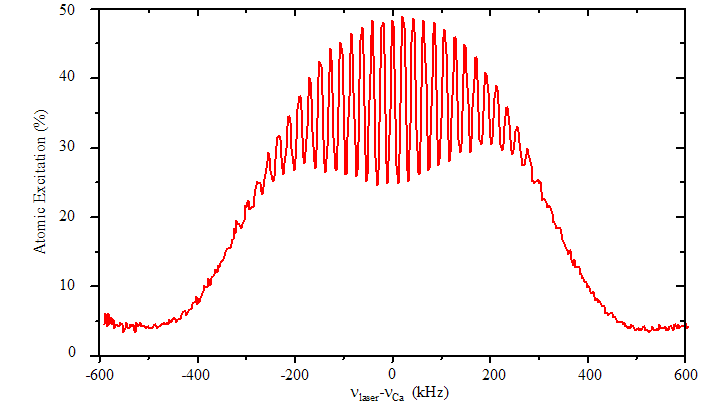
|
|
|
|
Optical atomic clocks based on neutral
atoms
|
|
|
|
|
|
|
|
|
Introduction
By virtue of their much higher oscillation frequencies, optical frequency standards have tremendous potential for improvement over their microwave counterparts, which have served as the primary standards for the past 50 years. This project focuses on the development of the next generation of atomic frequency standards/clocks, based on optical transitions in laser-cooled neutral atoms. Neutral atom clocks have the potential to have extremely high stability due to the high signal-to-noise ratios offered by the large number of neutral atoms that can be trapped. Presently, we have two neutral clock systems in our laboratory, one based on freely expanding Ca atoms, the other based on Yb atoms confined to an optical lattice. The Ca standard at 657 nm has demonstrated a fractional frequency instability of < 4 x 10-15 for 1 s averaging time and an absolute fractional uncertainty of 7.5 x 10-15. Moreover, the relative experimental simplicity of the Ca apparatus should enable compact, robust systems that can achieve extremely high stability. In fact, it has been used has a local flywheel to help optical lattice clocks evaluate their systematic uncertainties at the 10-16 level. While there is still good potential for improved performance for the Ca clock, Doppler-related issues and the transition's natural linewidth (~400 Hz) will eventually limit its progress. The Yb clock circumvents these limitations by trapping atoms for seconds or more in an optical lattice, whose wavelength (~ 760 nm) is carefully chosen to yield identical ac stark shifts to the ground and excited states of the clock transition. Long interaction times are possible yielding narrow linewidths on the 1S0→3P0 clock transition at 578 nm. With the atoms confined in the Lamb-Dicke regime, Doppler and recoil effects are suppressed. Thus the Yb clock has the potential for high line Q (>1014) and extremely low fractional absolute frequency uncertainty (<10-17).

References (click on hyperlinks for pdf versions of the manuscripts) or visit the Division publication site for a updated listing of publications describing this work:
Chris Oates, NIST ([email protected])